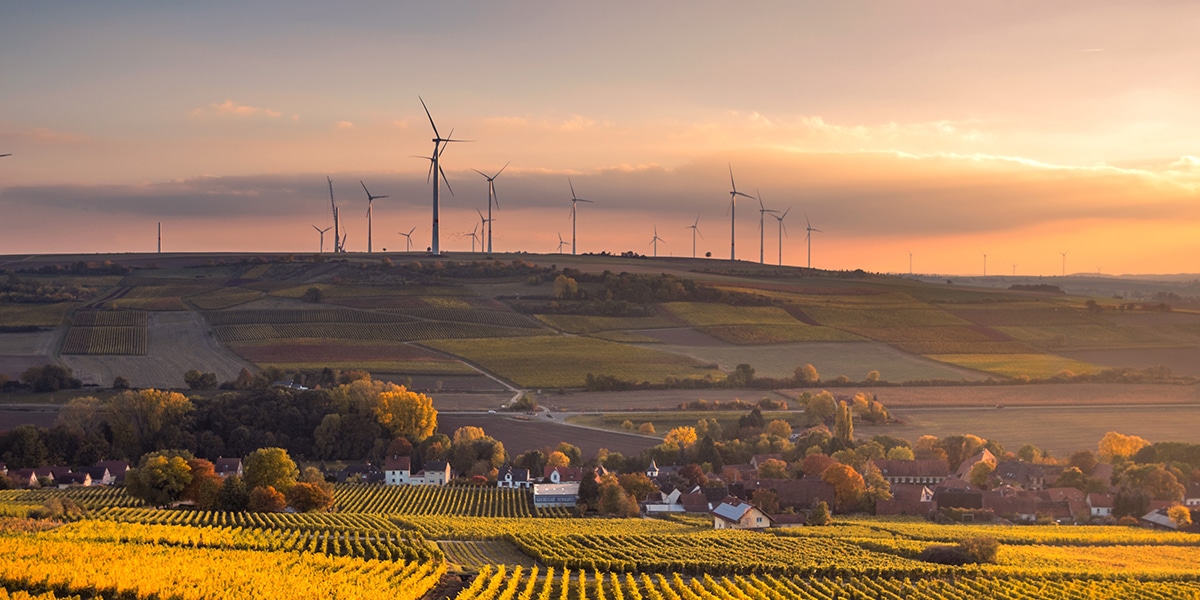How does Russia’s continuing war in Ukraine impact our work in the world of energy? In order to answer this question, we must untangle the complexities of the war’s impacts on energy supply in Europe, specifically natural gas and oil. In this blog post, our cross-functional team of experts answers some questions about these energy impacts and potential influences on an organization’s renewable energy strategy in Europe.
What have price trends in the European energy market looked like in the past?
To understand European price trends, you have to look at three distinct periods of time: pre-pandemic, during the peak of the pandemic, and a post-vaccine period.
In 2018-2019, the European electricity markets were functioning under normal market conditions, but during the peak of the COVID-19 pandemic there was a significant drop in electricity consumption and prices crashed because of the decreased demand. Electricity prices recovered in 2020, but in late 2021, when Europe reached high COVID-19 vaccination rates, there was a significant jump in prices due to strong global demand for energy as well as supply chain constraints.
When discussing electricity market price trends, it’s useful to reference the carbon pricing trends, as the EUA carbon price is embedded in power prices. For many years, the EUA carbon price was flat and hovered around EUR 5/tonne. Led by a sector-wide ambition to move away from fossil fuels, the EUA carbon price surpassed EUR 50/tonne in 2021 and nearly hit EUR 100/tonne in early 2022.
What is happening with the energy market prices now?
In early 2022, the Ukraine-Russia war added even more uncertainty to global energy markets, including fear of major disruptions of natural gas supply in Europe, causing electricity prices to skyrocket to unprecedented levels. As of mid-2022, prices have yet to go back down to pre-pandemic levels, and there is no relief in sight.
The EUA carbon price, on the other hand, had a brief correction in early March 2022 when the Ukraine-Russia war started, but it quickly rebounded and is now back to its unprecedentedly high level near EUR 100/tonne. The EUA price is expected to remain high for the foreseeable future due largely to comprehensive decarbonization policies across Europe.
The market outlook shows continued volatility and historically high prices for all forms of energy, as well as carbon. There may be some seasonal relief, but all eyes are on Europe’s ability to secure sufficient energy supplies for the 2022-2023 winter.
Over the long term, renewables offer a great opportunity for enhanced energy security across many European markets. As a result, corporate, utility, and government buyers remain committed to their climate goals and are still pursuing them despite turbulent market conditions.
What is the current state of natural gas in Europe?
Natural gas became a global market during the pandemic. The US is a self-generating market, as opposed to Europe, which is reliant on gas pipelines from different origins of supply. Historically, supply was broken out into three equal sources: Russia, Norway, and the Netherlands.
These origins of supply were disrupted when several smaller earthquakes in the Netherlands were linked to natural gas mining. In 2018, the State Supervision of the Mines advised the Dutch government to decrease its production. The Netherlands is now only producing about 5% of its previous supply, which would mean that about a third of Europe’s natural gas supply disappeared.
Before the pandemic, this drop in supply was picked up by Norway and Russia. During this same time period, some countries invested in their own pipelines, built liquified natural gas (LNG) terminals, and began importing more supply from Qatar, North Africa, and the US.
During the pandemic, another major issue arose when the Norwegian natural gas supply went on maintenance, causing their supply to drop significantly. Maintenance work can take a significant amount of time, sometimes up to two years. So even today, Norway is still not back up to its pre-pandemic supply levels. At the point that Norwegian natural gas went on maintenance, Russia began sourcing 60-70% of Europe’s natural gas supply, making Russia Europe’s most important supply source.
It’s also important to note that European natural gas demand increased last year caused by a combination of factors. Firstly, wind production was low in 2021. Second, an increased carbon price made it a less expensive fossil fuel option.
How can Europe diversify from Russian gas?
Europe has targets for 2022 to displace Russian gas imports, with specific goals to reduce the natural gas supply by 80%. The primary strategy of the plan is to replace natural gas with LNG. LNG won’t achieve the entire reduction goal, so Europe is also planning to supplement with other strategies like building out renewables, energy efficiency, biomethane, and more. In terms of timeframe, these are not all immediate options for replacements. A lot of them will require two to three years to implement, which leaves Europe fairly dependent on Russian gas in the near term.
How does this impact net zero targets and decarbonization efforts?
What’s going on has put a big focus on the massive dependence that Europe, and much of the world, has on fossil fuels and how difficult the energy transition is going to be. The war in Ukraine underscores the urgency to get to Net Zero, but it’s not necessarily a direct path. Right now countries are looking into fuel switching and bringing in coal to help with diversification, which may actually increase carbon emissions in the short term. This, of course, is not the best path for the climate, as it goes against the EU’s desires for decarbonization. Further, countries that choose this option are getting heavily taxed for their added carbon emissions.
Will there be a large volume of subsidies coming out of the EU to support the renewable energy market?
It’s unknown at this time and causing many people to wait as they’re trying to figure out the best timing to get into the market. In order to get an answer to this, it will be important to monitor policy that affects the renewables market.
For additional information on European renewables policy, here’s a video by Noah Bucon or contact us for more information.


